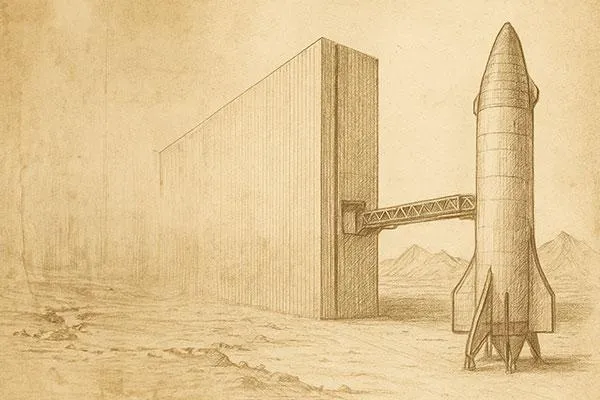
Neom’s The Line: Dystopian Fantasy or Off-World Prototype?
Neom's The Line: A Prototype for Us — Or for Mars?
I’ve been thinking a lot lately about collective thoughtform — how the accumulated perspectives around us quietly shape our own opinions, fill our heads with preconceptions, and nudge us toward certain emotional frequencies, often without us even noticing.
For me, that influence usually comes through YouTube. I’m not much of a Netflix or traditional TV guy. I binge YouTube on my living room screen, devouring everything from politics, business, and pop culture breakdowns to mega-build documentaries — and, of course, the occasional kitten rescue video. Because let’s be honest, few things soothe the soul like a kitten rescue.
One topic in particular has gripped me: Saudi Arabia’s NEOM project, and especially The Line. It’s something I find genuinely exciting for its potential to shape the future — and yet, it’s wrapped in controversy.
Let’s set aside the human rights issues for a moment. They matter. They deserve serious attention. But that’s not what this piece is about.
What fascinates me is how almost impossible it is to find a YouTube video that speaks positively about The Line. At best, it’s dismissed as an unrealistic fantasy that will never materialise. At worst, it’s painted as an affront to humanity — a monstrous overreach destined to fail.
Even the mega-build channels you’d expect to be captivated by such an audacious concept seem to delight in trashing it, pumping out “I told you so” content that revels in every delay or setback.
And so, if The Line ever does get built, it’s already marred by a low-frequency thoughtform — a dense field of negativity that distorts how we might otherwise experience or interpret it.
But what if we turned that around for a second? What if we tried to look at The Line through a different lens — one a bit more generous, a bit more curious?
It’s easy to call The Line dystopian. A mirrored wall slicing across the desert, promising AI-run everything and stacking millions of people into a narrow urban corridor — it does sound like something out of Judge Dredd, a perfect set piece for our collective techno-fears.
But sometimes I wonder if we’re too quick to default to that narrative. If we’re so eager to slot The Line into our internal Black Mirror episode that we miss why an idea like this might actually exist.
Have its critics ever stood in the Arabian desert at fifty degrees Celsius? The kind of heat that sears your skin in minutes, where walking even a hundred metres feels like rolling dice with dehydration. In climates like that, our traditional sprawling, car-dependent cities aren’t just impractical — they’re unlivable. Which is why two-thirds of Dubai leaves every summer.
Maybe The Line isn’t a dystopian fever dream at all. Maybe it’s an early sketch of what survival might have to look like when the climate finally corners us.
And then there’s something else. The more I read about The Line — its dense, resource-recycling, self-contained design — the more it strikes me how much it resembles the habitats we dream up for Mars or the Moon. If we ever build on Olympus Mons, chances are it’ll look a lot like this: compact, efficient, every inch calibrated for closed-loop sustainability.
Maybe The Line is humanity’s first real prototype for living off-world. It just happens to be planted here on Earth first.
Imagine if we took that idea and pushed it further. What if The Line was organised not by top-down control but by federations of self-governing micro-communities? What if it became a kind of living lab for mutual aid, local councils, and post-extractive economies — a space where we could experiment with systems that aren’t built purely on siphoning value upward?
What if we wove biophilic design all through its spine? Letting trees spiral along walkways, gardens blossom across levels, creating vertical ecosystems where nature and humans bump into each other daily, even ten storeys up.
Because here’s what strikes me most: The Line could be beautiful. It could be fair. The concept itself — a shaded, walkable refuge against a brutal climate — isn’t inherently dystopian. It’s the extra layers we slap on top, the hierarchies we replicate, the surveillance we accept, the human scale we either honour or erase.
So maybe The Line isn’t a dystopia in waiting. Maybe it’s a canvas. A rough draft of how we might live differently — when Earth grows less forgiving, or when we finally pack up for Mars. It poses the question: what do we bring with us? The same old extractive systems? Or something radically new?
Because one way or another, we’re heading into harsher realities. Whether it’s the burning Arabian sands or the rust-red plains of another planet, we’ll have to figure out how to live there. The real question isn’t whether The Line is dystopian. It’s whether we have the vision — and the courage — to see what it could become, if we let it.
